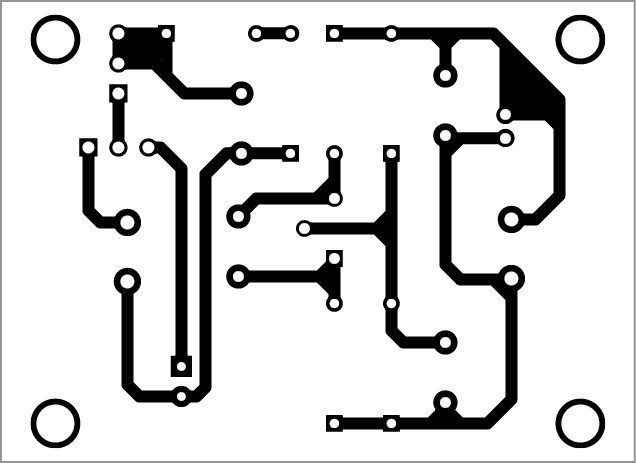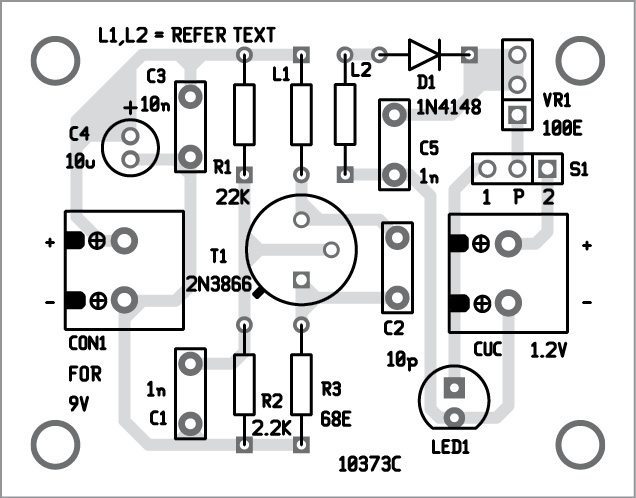 These days mobile phones with contactless charging are readily available. The circuit shown here explains how contactless charging of a battery can be done, while helping you design a contactless battery charger for yourself.
These days mobile phones with contactless charging are readily available. The circuit shown here explains how contactless charging of a battery can be done, while helping you design a contactless battery charger for yourself.
Circuit and Working
Circuit diagram of the contactless battery charger is shown in Fig. 1. It is built around npn transistor 2N3866 (T1), diode 1N4148 (D1), an LED (LED1) and a few other components.
Transistor T1 forms the 100MHz RF medium-power oscillator. Inductors L1 and L2 are made with four turns of 20SWG enamelled copper wire as closely-wound coils having 6mm diameter.
Coil L2 is kept near L1 (around 2mm apart). There is no electrical contact between L1 and L2, but RF (VHF) signals from L1 get induced to L2. Signals obtained from L2 are sufficient to drive LED1 or charge a 1.2V rechargeable cell (Nickel-Cadmium) after rectification and filtration.
Also Check: Arduino based 12V battery Charger
Construction and Testing
An actual-size, single-side PCB layout of the contactless battery charger is shown in Fig. 2 and its components layout in Fig. 3. After assembling the circuit on a PCB, enclose it in a suitable plastic box. Place L1 and L2 next to each other such that LED1 glows when switch S1 is at position 1. When S1 is at position 2, you can charge a 1.2V rechargeable cell.
The circuit works off 9-12V battery power supply.



Download PCB and Component Layout PDFs: Click here
Pradeep G. is B.Sc. (Physics) and a regular contributor to international magazines. He is also a small-business owner in south India
Fig. 1: Circuit diagram of the contactless battery charger
Fig. 2: Actual-size PCB layout of the contactless battery charger
Fig. 3: Components layout of the PCB








Pls reply how much rupees it will take to do that project
You can assemble the circuit on breadboard within a budget less than Rs 500.
Can it be used to charge others recharging cells or a mobile phone battery
This circuit only explains how you can construct a contactless charger circuit following the same principle. This circuit generates only a very very small current and so is not suitable to charge your normal mobile battery.
pls tell me about its applications and distance in which it would charge…sa
The circuit presents an example of how a contactless charging of a battery can be done. The range is about 2-5mm depending on L1 and L2.